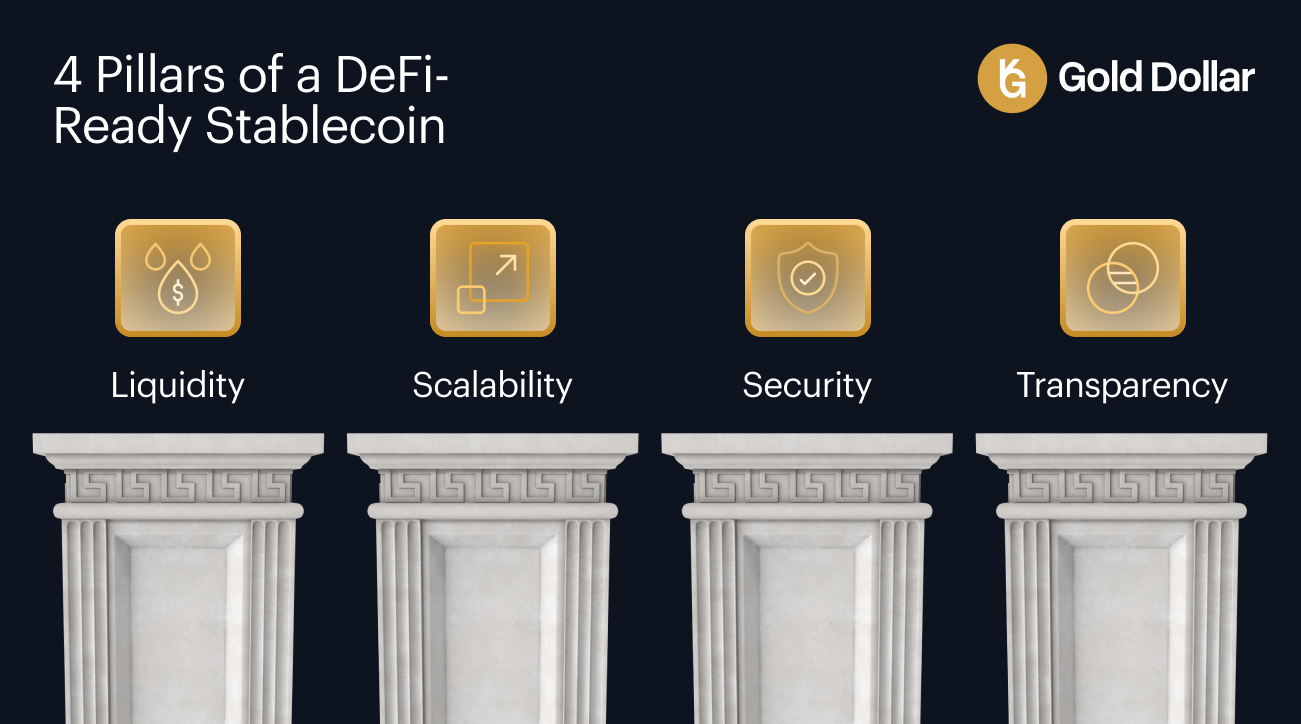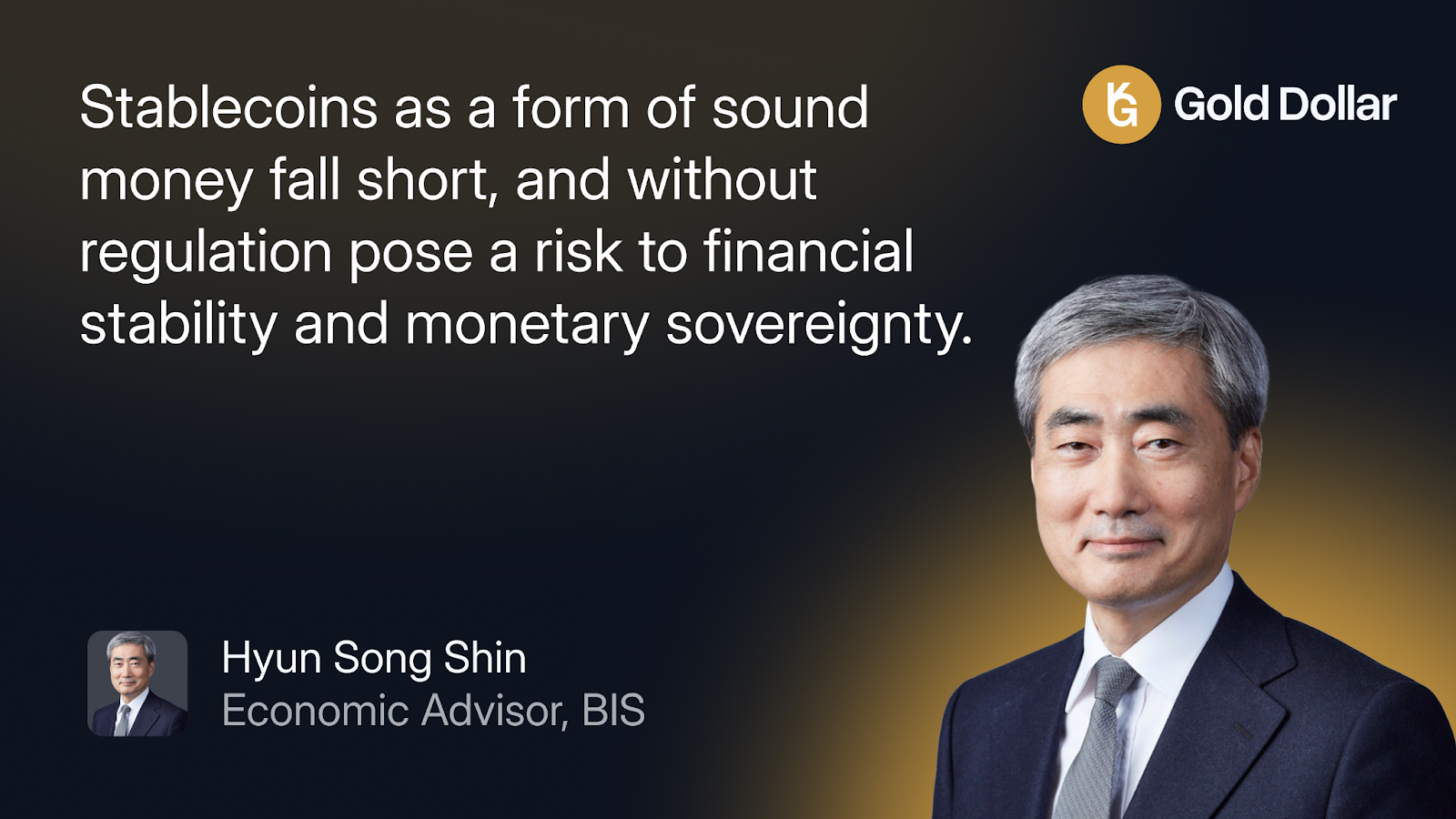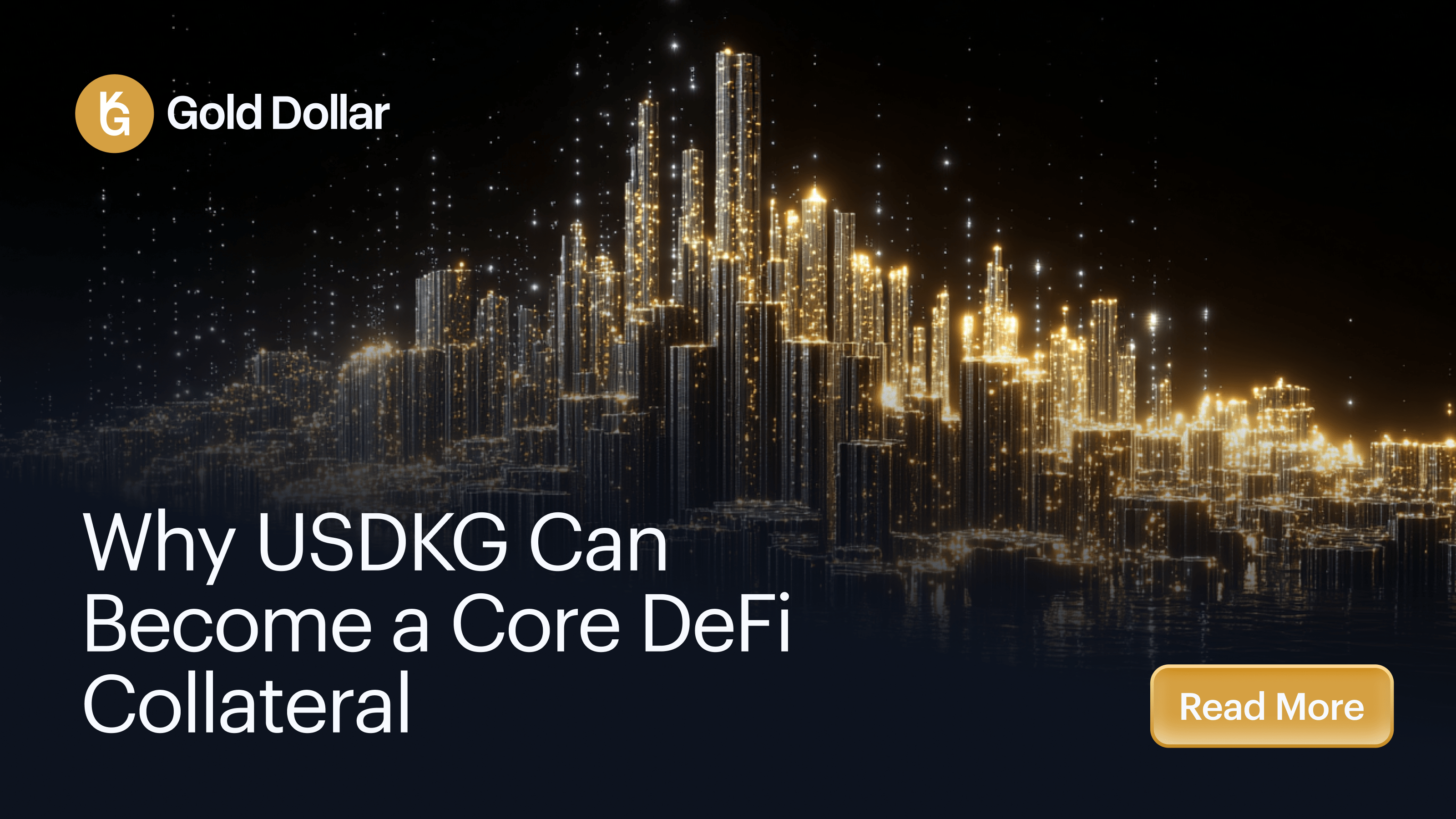What Makes a Stablecoin DeFi-Ready?
September 30, 2025

Decentralized finance (DeFi) has grown into a multi-hundred-billion-dollar ecosystem, reimagining everything from lending and borrowing to derivatives and payments. Yet, at the heart of nearly every DeFi application lies one crucial component: the stablecoin. Without a trusted anchor of value, the volatility of cryptocurrencies like Bitcoin or Ethereum would make it nearly impossible to build sustainable financial infrastructure.
But not all stablecoins are equal and not all of them are fit for the unique demands of DeFi. In this article, we explore what “DeFi-ready” really means for a stablecoin, why it matters for institutions and regulators, and how gold-backed models like USDKG could represent the next evolution of stable value in decentralized finance.
Stablecoins as the Engine of DeFi
Stablecoins today account for a large share of DeFi activity. According to the Bank for International Settlements (BIS), over 70% of decentralized lending is collateralized by stablecoins, while they also dominate trading pairs on decentralized exchanges (DEXs). In practice, stablecoins function as both collateral and settlement units, enabling users to borrow, lend, and transact without ever exiting the blockchain environment.
This explains why liquidity crises in USDC or controversies around Tether reverberate so strongly across the entire ecosystem: when the unit of account in DeFi is shaken, the foundation of the market trembles.
The Four Pillars of a DeFi-Ready Stablecoin
Based on global market analysis and insights from recent research, four factors define whether a stablecoin can thrive in DeFi:
1. Liquidity and Deep Market Integration
DeFi runs on liquidity. A stablecoin must be widely integrated into decentralized exchanges, lending pools, and derivatives markets. This not only ensures price stability but also allows large transactions without slippage. USDC has historically dominated this role due to its strong institutional links, but new entrants increasingly compete on speed, composability, and collateral strength.
2. Transparency and Proof of Reserves
Trust in DeFi is algorithmic but collateral trust is human. Without clear, verifiable backing, a stablecoin risks becoming unusable in high-stakes DeFi protocols. Proof-of-reserve audits, preferably published onchain, are becoming the baseline standard. The collapse of algorithmic models like TerraUSD underscores that opaque or fragile collateral systems are non-starters for DeFi.
3. Programmability and Interoperability
A DeFi-ready stablecoin must be programmable across smart contracts and interoperable across chains. From collateralized debt positions in MakerDAO to liquidity pools on Curve, the ability to interact seamlessly with DeFi protocols determines adoption. Multi-chain deployment (Ethereum, Tron, Layer-2s) and compatibility with oracle systems like Chainlink have become key requirements.
4. Regulatory Resilience
DeFi is still largely permissionless, but the pressure of global regulation is mounting. The EU’s MiCA framework, the U.S. debate around stablecoin legislation, and Asian financial hubs like Singapore and Dubai all highlight one trend: compliant stablecoins will gain privileged access. A DeFi-ready asset must therefore be structured to withstand regulatory scrutiny without compromising usability.
Taken together, these four elements define what it means for a stablecoin to be truly DeFi-ready. The diagram below summarizes these pillars at a glance, highlighting how liquidity, transparency, programmability, and regulatory resilience work in concert to build trust.

Why Gold-Backed Models Deserve Attention
Most of today’s DeFi activity relies on fiat-backed stablecoins (USDT, USDC), which dominate liquidity but carry hidden risks. They depend on the solvency of private issuers, the stability of U.S. Treasuries, and the global confidence in the dollar. When questions arise around reserve quality or redemption mechanisms, contagion spreads quickly.
Gold-backed stablecoins present a fundamentally different model. By anchoring value to a tangible, universally recognized asset, they bring resilience against both crypto-native volatility and fiat-specific risks like inflation or debt ceilings. As Onchain Magazine noted in July 2025, gold-backed tokens are ‘emerging as an anchor, offering investors and developers a rare mix of digital liquidity and old-world stability.’
That contrast is echoed at the institutional level. As Hyun Song Shin, Economic Adviser at the Bank for International Settlements, warned earlier this year: ‘Stablecoins as a form of sound money fall short, and without regulation pose a risk to financial stability and monetary sovereignty.’
His words highlight why the market must evolve. Stablecoins tied only to fiat reserves inherit the fragility of the banking system. By comparison, gold-backed models like USDKG start from a different foundation: tangible collateral, independent audits, and sovereign oversight. In DeFi, that difference is the line between short-term utility and long-term resilience.

Building DeFi-Readiness from the Ground Up
USDKG was designed with these four pillars in mind:
- Liquidity Integration: USDKG is preparing for listings on decentralized exchanges like Uniswap and Curve, with plans for integration into lending platforms as liquidity builds.
- Proof of Reserves: USDKG maintains full collateralization with independently audited physical gold reserves, stored in Kyrgyzstan and verified by third-party auditors.
- Programmability: Built on Ethereum and Tron, USDKG can interact with leading DeFi protocols from day one, with future multi-chain expansion planned.
- Regulatory Compliance: By aligning with Kyrgyzstan’s Law on Virtual Assets and FATF standards, USDKG is structured for long-term sustainability under tightening regulatory regimes.
This combination positions USDKG as more than a transactional token: it is a bridge between traditional assets, regulatory clarity, and DeFi programmability.
The Road Ahead
The next generation of DeFi will demand stablecoins that combine transparency, liquidity and resilience. As institutional players enter the space, the pressure to adopt audited, compliant and asset-backed models will intensify.
Fiat-backed stablecoins will likely remain dominant in the short term. But as the market matures, the search for collateral diversity will open the door for commodity-backed assets. Gold, with its 5,000-year history as a store of value, is uniquely positioned to provide that diversification.
USDKG demonstrates how a gold-backed stablecoin can be not just a safe store of value but also a fully DeFi-ready instrument, offering global liquidity, regulatory compliance and the confidence of tangible reserves.
In a world where the line between traditional and decentralized finance is blurring, the stablecoin that succeeds will be the one that earns trust on both sides.
.svg)


